New Look Of The Little Lady of Flores
Posted by: Loren Coleman on November 23rd, 2009
The new complete-body reconstruction of LB1, the “Little Lady of Flores,” by the Parisian paleoartist Elisabeth Daynès (©2009, S. Plailly/E. Daynès—Reconstruction Atelier Daynès Paris) of Homo floresiensis can now be shared.
This new Daynès illustration above is contained within the just-published December 2009 paper in Significance, “The geometry of hobbits: Homo floresiensis and human evolution,” regarding the definitive statistical analysis of Homo floresiensis being neither diseased humans or human pygmies.
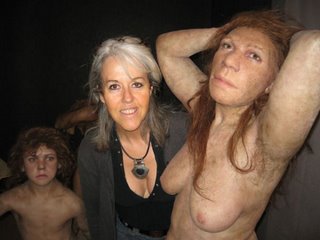
Elisabeth Daynès and some of her reconstructed Neandertals. Below the artist works the bust on Mrs. Ples.
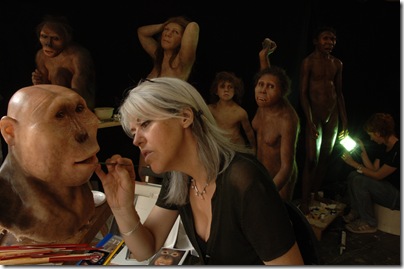
While produced in 2008, other 2009 views of these new, widely accepted reconstructions by Elisabeth Daynès are also available, such as here, and below.
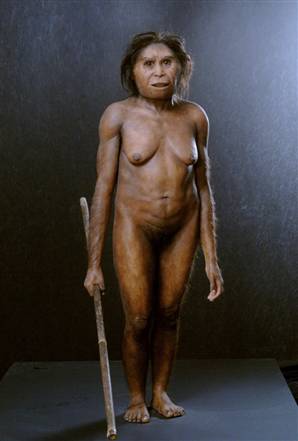

The original drawing after LB1 was discovered was of a male, as seen in the above National Geographic painting of the first Homo foresiensis find. This is to be compared to Richard Klyver’s sketch of the Flores woman. The first fossil discovery of Homo floresiensis was of a female, not a male, of course.
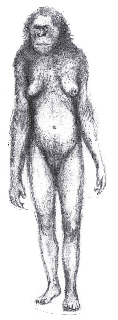
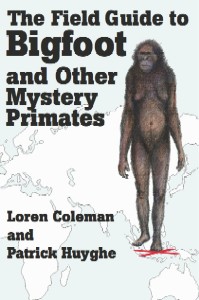
The Little Lady of Flores is on the front cover of The Field Guide to Bigfoot and Other Mystery Primates , illustrated with a drawing of Homo floresiensis by wildlife artist Richard Klyver.
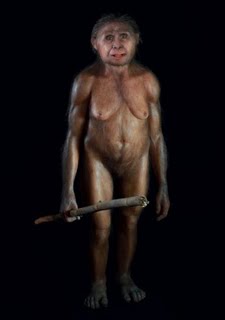
This paleoartist’s new reconstruction of the Homo floresiensis feet are especially interesting, for the type of footprint left might demonstrate an appearance of the hallux indicating notable separation from the other toes.

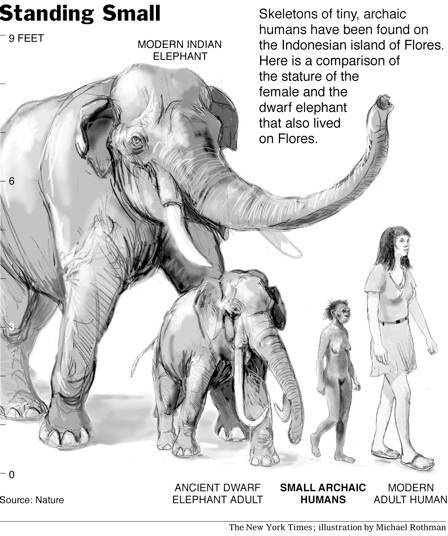
The various routine images of Homo floresiensis, such as the above two drawings, I predict, will now slowly be replaced by the regular sharing of Elisabeth Daynès’ reconstruction, see more views below, in future treatments about the Little Lady of Flores.
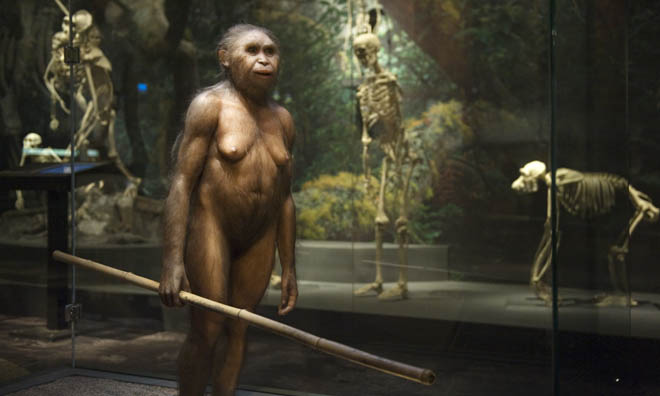
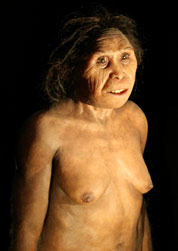
“The discovery that Homo floresiensis survived until so very recently, in geological terms, makes it more likely that stories of other mythical, human-like creatures such as Yetis are founded on grains of truth….Now, cryptozoology, the study of such fabulous creatures, can come in from the cold.”
~ Henry Gee, editor of Nature, “Flores, God and Cryptozoology,” 2004 editorial.
+++
ICM Moment
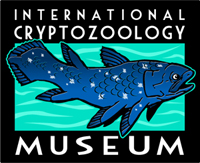
When visiting the International Cryptozoology Museum in Portland, Maine, be certain to view the first replica of the Homo floresiensis skull to have been obtained and displayed in North America after the 2003 discovery of the Little Lady of Flores.
The International Cryptozoology Museum™ leads the way in being your gateway to adventure, education and discovery.
About Loren Coleman
Loren Coleman is one of the world’s leading cryptozoologists, some say “the” leading living cryptozoologist. Certainly, he is acknowledged as the current living American researcher and writer who has most popularized cryptozoology in the late 20th and early 21st centuries.
Starting his fieldwork and investigations in 1960, after traveling and trekking extensively in pursuit of cryptozoological mysteries, Coleman began writing to share his experiences in 1969. An honorary member of Ivan T. Sanderson’s Society for the Investigation of the Unexplained in the 1970s, Coleman has been bestowed with similar honorary memberships of the North Idaho College Cryptozoology Club in 1983, and in subsequent years, that of the British Columbia Scientific Cryptozoology Club, CryptoSafari International, and other international organizations. He was also a Life Member and Benefactor of the International Society of Cryptozoology (now-defunct).
Loren Coleman’s daily blog, as a member of the Cryptomundo Team, served as an ongoing avenue of communication for the ever-growing body of cryptozoo news from 2005 through 2013. He returned as an infrequent contributor beginning Halloween week of 2015.
Coleman is the founder in 2003, and current director of the International Cryptozoology Museum in Portland, Maine.











Great report, Loren. Thanks for bringing it to your readers. That along with this absolutely stunning artwork underscores how much interest there is for continued research into the scientific investigation of our natural world and specifically our own human lineage. More of that, and more of this. Cheers.
Thanks for the article. I can’t help but be impressed with how much work was done to create that display. I am sure it took many long months sitting and finely crafting each one of these creations. I am sure there were many long hours sitting alone figuring out colors and textures.
Kudos to the people who did the work so we can see what a hobbit’s life and physical traits were like.
I really didn’t know what to expect as to how they actually looked and I am surprised. They are not what I expected and I loved being shown something completely out of my own (in this case) misconceptions.
Kudos to Elisabeth Daynes for her tremendous recreations and her tremendous talent. Great to know there are people like her in Paleontology that can aid in Cryptozoology.:)